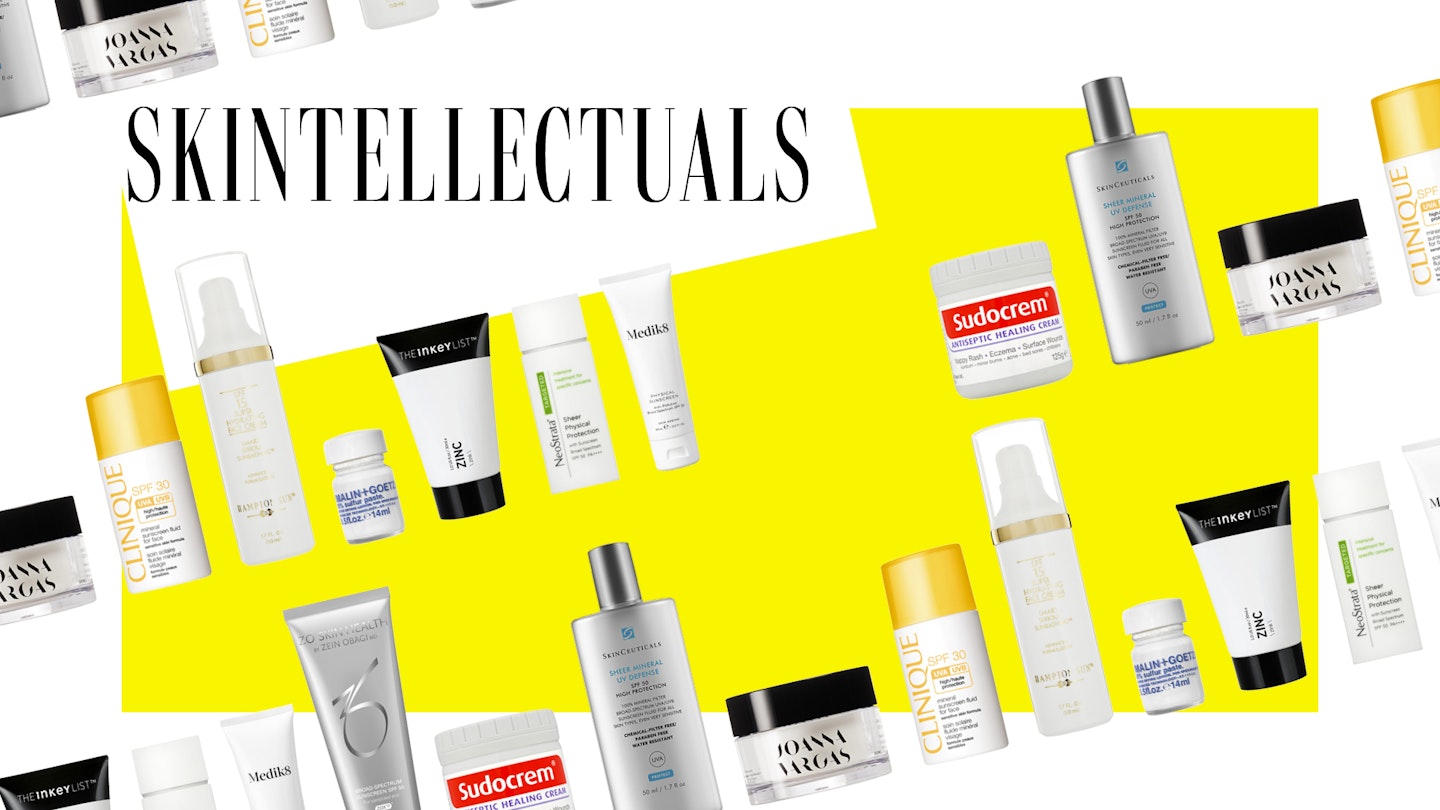This protective wonder product is a key ingredient in nappy creams, which shows you just how soothing Zinc Oxide is. But how does it work, and which ingredients can you find it in? We ask an expert...
What is Zinc Oxide?
Made when the metal zinc is heated, zinc oxide is a white, powdery mineral that can most commonly be found in sun cream, but is also used in other creams, plastic, and fabrics. Because of its powdery nature, it doesn’t submerge into skin, but rather sits on top offering a shield for skin from external aggressors, like sunlight.
How Does Zinc Oxide Work?
Consider zinc oxide your helping hand for the fundamental skin issues we humans suffer from. “It’s effective at healing the skin,” says Rick Woodin, Dermatologist and Head of Global Research & Development at ZO Skin Health UK, “It can be used to heal wounds, take down that sore feeling from sunburn and soothe chapped skin.” And that’s all thanks to its ability to take down inflammation and form a barrier between the environment and compromised skin. In fact, it’s often a hallmark ingredient in nappy creams, which perhaps gives perspective on how healing it can be.
What does Zinc Oxide Do To The Skin?
What zinc oxide is most commonly used for is in physical SPFs: “It sits on top of the skin and forms a protective barrier which refracts UVA and UVB rays from the skin,” says Rick, as opposed to chemical SPFs that absorb the rays before they can get into – and harm – the skin. The benefit of using a zinc oxide-based physical sunscreen is that it’s far less likely to aggravate skin (chemical ones are known to exacerbate easily-irritated skin) although in the past they’ve also been known to look powdery or white on the skin. Recent technological advances mean that micro-zinc oxide particles are a thing, making that thick white paste a thing of the past.
“Avoid any sunscreens that are less than 3 per cent zinc oxide,” advises Rick, “If it’s that low in concentration, you won’t get sufficient protection.” The higher your SPF rating, the more zinc oxide the sun protection will contain and the longer you’ll be protected for; many sunscreens contain 25 to 30 per cent zinc oxide, depending on factor.
How do you use Zinc Oxide?
Ask any derm, celeb or beauty editor and they will all unanimously say that SPF is an everyday essential, so if you do opt for a zinc oxide (physical) sunscreen, ensure to use it every morning post-cleanse. “A teaspoon should be enough to cover your face and décolletage,” recommends Rick, “And don’t be afraid of applying too much as most people apply too little.”
Who Is Zinc Oxide For?
Anyone can use it but if you have sensitive, easily irritated skin or suffer from conditions like eczema and psoriasis, a zinc oxide-based sunscreen is a must-try.
What are the best zinc oxide sunscreens, zinc oxide creams and zinc oxide formulas?
[Skinceuticals Sheer Mineral UV Defense](https://www.skinceuticals.co.uk/sheer-mineral-uv-defense-defense) SPF 50, £37
Sudocrem, £2.99
[The Inkey List Zinc Oxide Cream Moisturiser](https://www.cultbeauty.co.uk/the-inkey-list-zinc-oxide-cream-moisturiser.html?gclid=CjwKCAjw39reBRBJEiwAO1m0OSD1Fid5cuBzcHzouFMXvfMvhbxA5Xq0gtGbvA3mD7vfrm_LFKvXahoCWRoQAvD_BwE&variant_id=18734&ef_id=CjwKCAjw39reBRBJEiwAO1m0OSD1Fid5cuBzcHzouFMXvfMvhbxA5Xq0gtGbvA3mD7vfrm_LFKvXahoCWRoQAvD_BwE:G_BwE:G), £8.99
[Joanna Vargas Daily Hydrating Cream](https://www.net-a-porter.com/gb/en/product/1056992?gclsrc=aw.ds&cm_mmc=Google-ProductSearch-UK--c-_-NAP_EN_UK_PLA-_-NAP%C2%A0-%C2%A0UK%C2%A0-%C2%A0GS%C2%A0-+Designer+-+Class_Beauty+-+Type_Skincare%C2%A0-%C2%A0High%C2%A0-%C2%A0BT--Skincare+-+Moisturizer_INTL&gclid=CjwKCAjw39reBRBJEiwAO1m0OVJDxVW2RGGdF2HiS56hASBZB_sDczYpg4BcBSQPs82TjQ8Lvn_AyxoCTvoQAvD_BwE&gclsrc=aw.dsrc=aw.ds), £54
